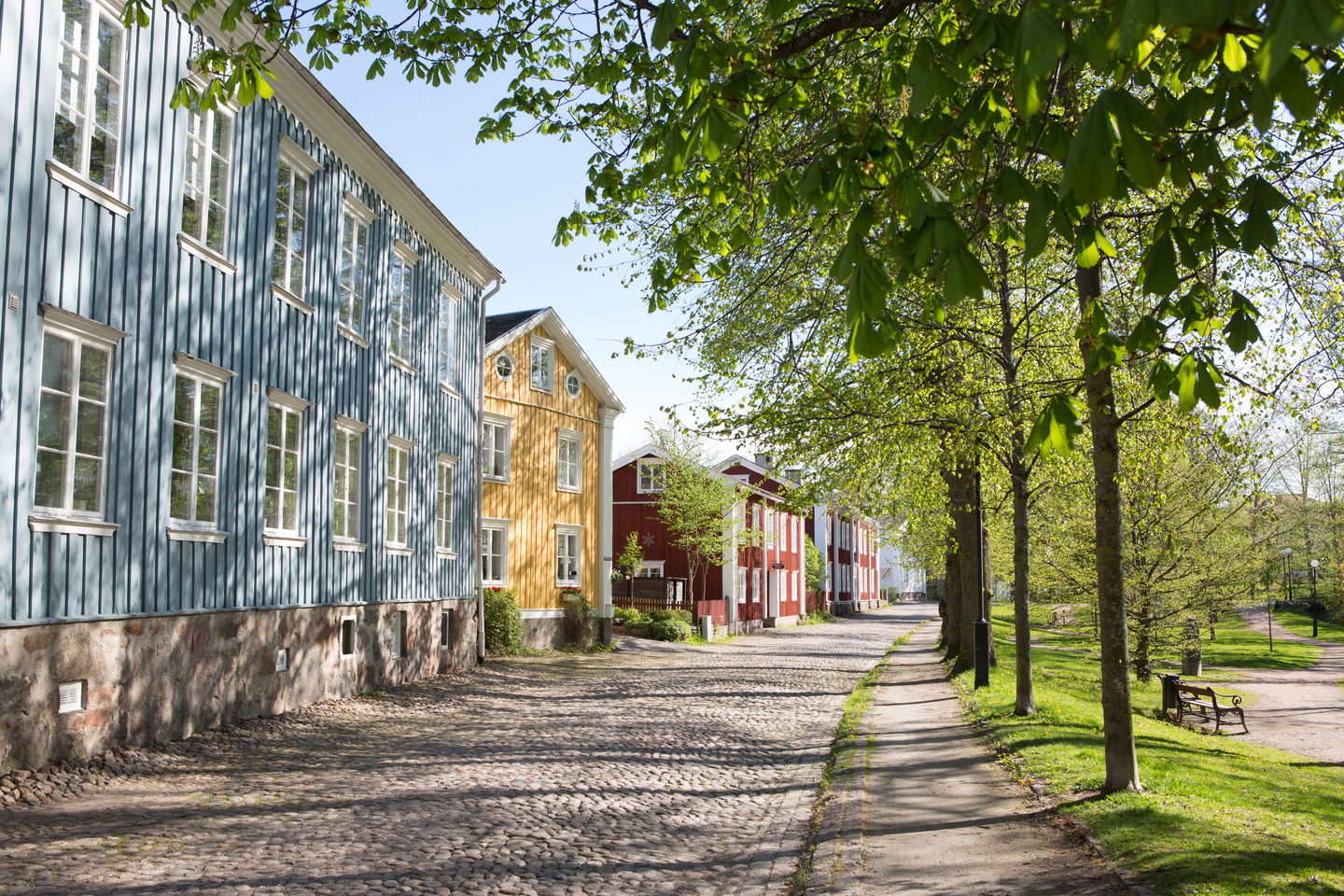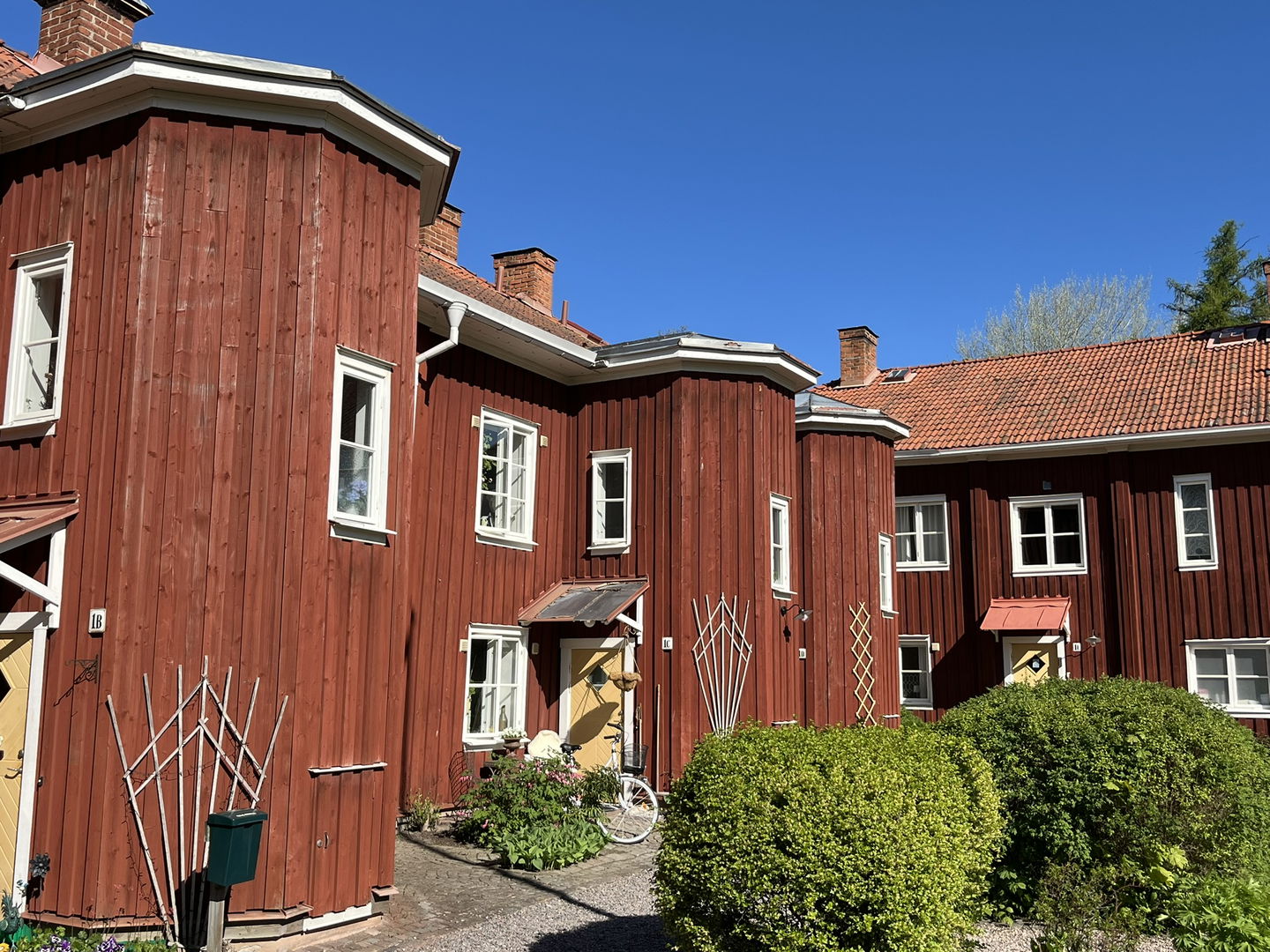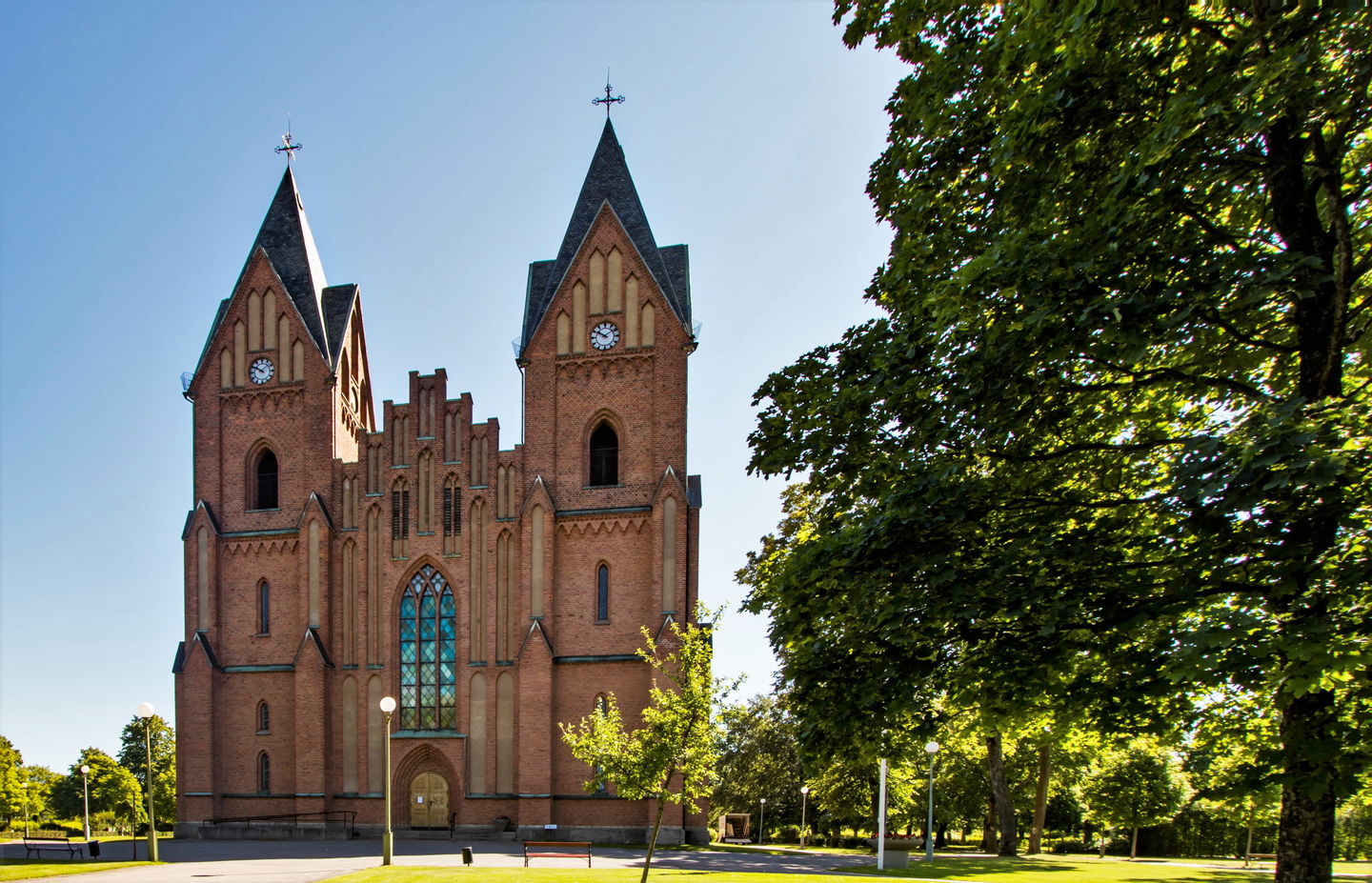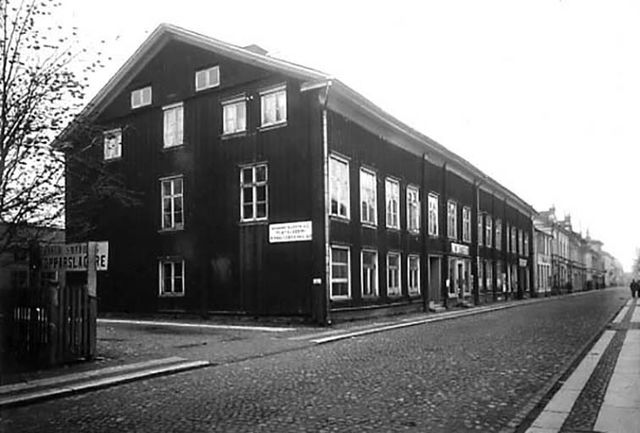
Arkitekturpromenad 2 i Kristinehamn
Kävely
- Kunta: Värmlands län
- 6708.42 km päässä sinusta
Polun yksityiskohdat
- Pituus 1.5 km
- Vaikeuksia Vihreä - yksinkertainen
Toiminnot
Kuvaus
Farms, Churches, and Old Streets
Kristinehamn’s buildings hold many beautiful, interesting, and surprising stories. On this walk, you’ll experience a town that is constantly growing. The new meets the old—where the iron exchange became a dance floor, and an old church is still outlined in cobblestones.
Keep your eyes open—you’ll pass more historic buildings, bridges, and sculptures along the way. Some feature silver plaques with fascinating facts. At several locations, you’ll also find oval signs offering deeper stories. The city’s history often hides in the small details—in a door, a stone pavement, or the name of a street.
The Pottery Shop, Gamla Kyrkogatan 16 – Three Doors, Three Stories
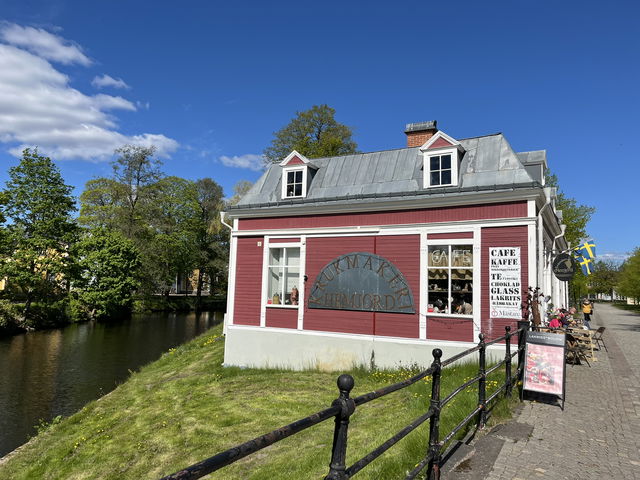
After the great fire of 1893, the entire commercial street—Kungsgatan—lay in ruins. There was an urgent need for new premises, and this simple building with three small shop spaces was quickly constructed. It was meant as a temporary solution—but the house still stands today.
It was known as "Bazaren" (The Bazaar), and over the years, everything from meat and fruit to cigars, yarn, and handmade cards has been sold here. Look for the three entrance doors and the three attic windows—they reveal the building’s origin as “three-in-one.”
Today, the building houses a café, a pottery studio, and a shop—but you are standing in front of a place that has worn many faces.
Stadshotellet, Kungsgatan 27 – The City’s Drawing Room
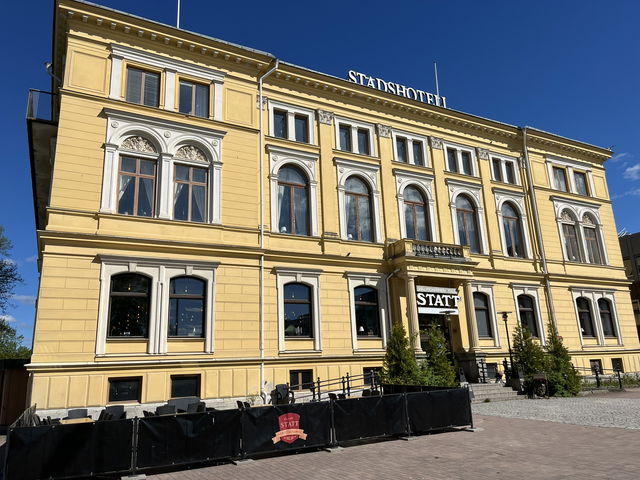
With its clean lines and lavish details, the Stadshotellet is a prime example of neo-Renaissance architecture. Built in 1878 and designed by brothers Axel and Hjalmar Kumlien—the same architects behind the Courthouse and Marieberg’s Hospital.
Inside you'll find Kristinasalen—one of Sweden’s most beautiful banquet halls—featuring massive chandeliers, an orchestra balcony, and a richly decorated ceiling that likely led to the building being listed as a historic monument in 1985. In the ceiling are two oil portraits said to depict the first innkeeper’s children.
In front of the hotel once stood "Träslottet," the city’s old inn. It was moved, but the Stadshotellet remains, a meeting place for locals and visitors alike.
Assemblégatan, Corner of Nya Kyrkogatan – French Influences
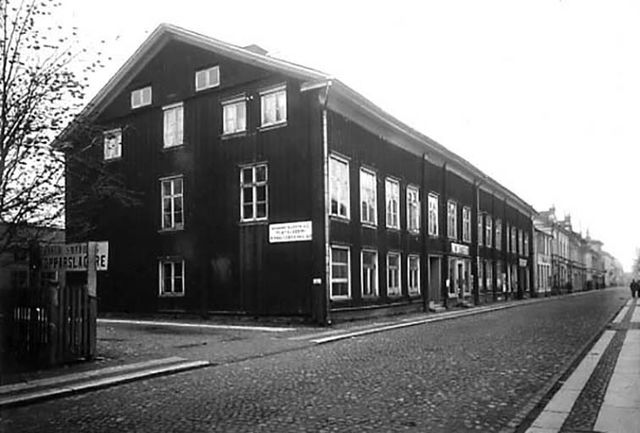
The street name is a memory of an important building. This was the site of the "Assemblée House," the city’s main gathering spot and the home of the iron exchange once a year, from 1786 until the mid-1800s. "Assembler" means gathering in French—the fashionable language of the time.
Jonas Alströmer visited here, and this was the birthplace of the Värmland Agricultural Society, the Vänern Navigation Board, and the Wermland Provincial Bank. Nils Ericsson presented his railway plans here—in a building that served as both a business hub and a place for entertainment. Upstairs, up to 300 guests from the ironworks society danced on the rough plank floor.
As the iron era faded, the building lost its purpose. It burned down in 1955—but the name lives on, a whisper of the importance this place once held.
The Church, Nya Kyrkogatan 1 – Neo-Gothic with Roots

When Kristinehamn’s church was completed in 1858, the town was expanding. The new church was located outside the old city fence, which followed the four streets Norra, Södra, Östra, and Västra Staketgatan. The church was designed by Professor C.G. Brunius in a distinctly neo-Gothic style.
Inside, traces of older times remain. The baptismal font dates back to the 13th century, the triumphal crucifix to the 14th, and various textiles and silverware come from several centuries. Much of it was moved from the town’s old wooden church.
A small museum is located in the chancel gallery, and the church is open to visitors most days. Here, many time periods meet in quiet harmony.
Stone Outline at Brogård Schoolyard, Gamla Kyrkogatan 2 – A Church Made of Cobblestones
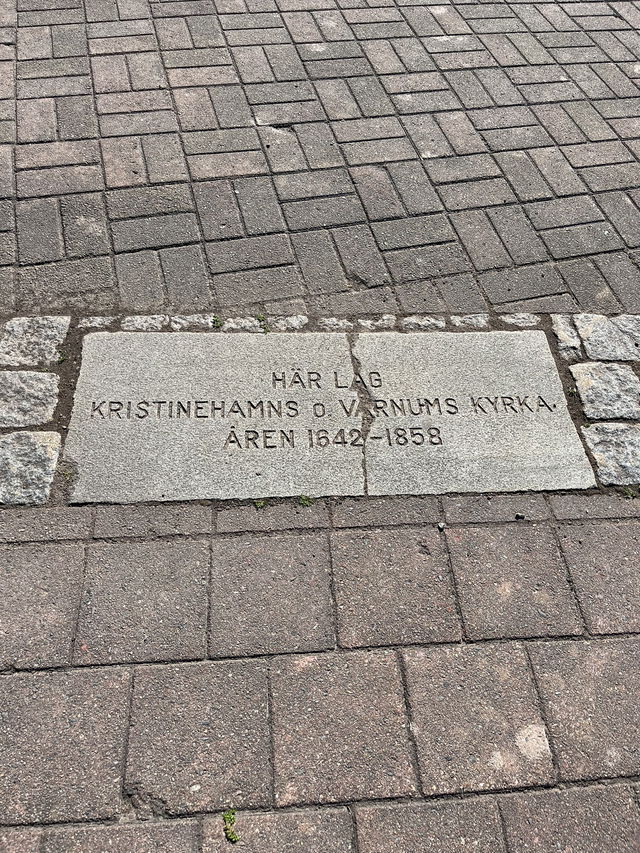
Here, in the middle of the schoolyard, the outline of the old wooden church has been recreated using cobblestones. If you stand at the plaque—marking the choir—and look toward the river, you’ll see the church’s contours before you. It was a cruciform church and one of the few buildings to survive the fire of 1777. The street leading from the schoolyard to the square was originally called Kyrkogatan; once the new church was built, it was renamed Gamla Kyrkogatan.
The cobblestone outline is a quiet reminder of how history lives on—even when it’s no longer visible above ground.
Hasselbladsgården, Corner of Gamla Kyrkogatan and Österlånggatan – Color, Craft, and Community

Here stands one of the town’s last examples of a traditional enclosed courtyard. The timber house, with its yellow paneled facade facing the street and red-painted panels facing the courtyard, was built in the early 1800s and painted in typical contrasting colors. A granite base gives the house literal and visual weight.
Many people have lived and traded here, and countless stories have unfolded. Market vendors and the famous candy seller “Plutta” are said to have lived here. The corner has hosted several shops, including “Elis på hörnan,” a local favorite.
Sockerslottet, Norra Staketgatan 8 – Sweet Neo-Gothic
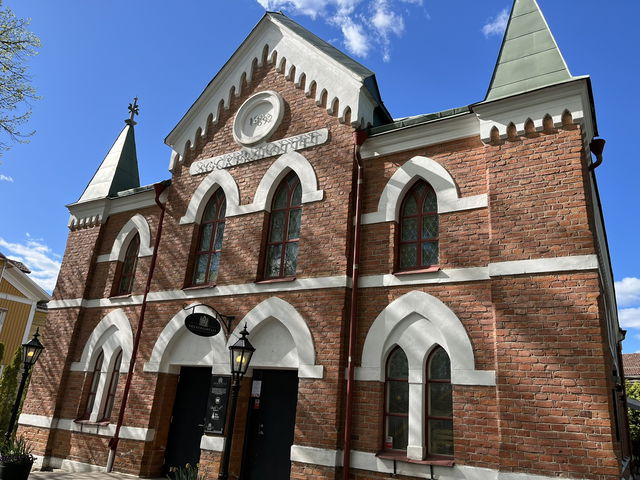
What is now a café, hotel, and chocolate factory began its life as a Baptist church. Designed by Jakobsson & Eriksson in Sundsvall and inspired by the pointed shapes of the neo-Gothic style, it was completed in 1892.
The building housed a church hall, baptismal font, and accommodation for both caretaker and evangelist.
When the congregation merged with Broängskyrkan, services ended—but the building found new life through sugar and care, earning the name “Sockerslottet” (The Sugar Castle).
Trädgårdsgatan – The City’s Memory in Wood and Stone

Pause to admire the beautiful courtyard and the main entrance with its balcony and columns on the red wooden house. Then turn right around the corner onto Trädgårdsgatan.
This street tells the story of life after the great fire of 1777. Cobblestones, two-story wooden houses, and architecture reflecting the town’s early rebuilding efforts.

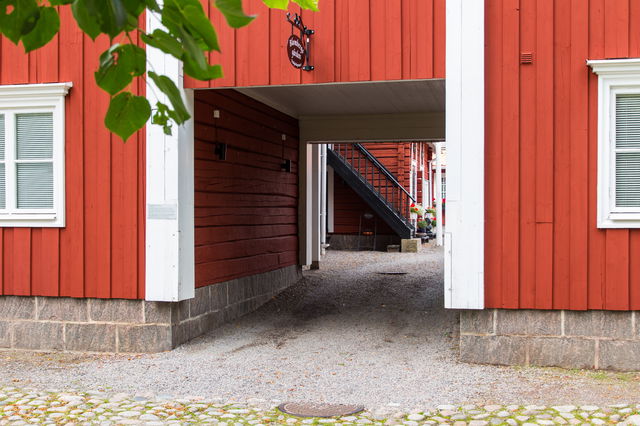
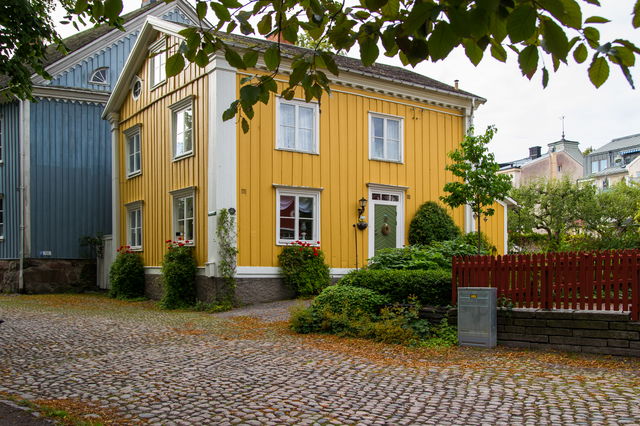
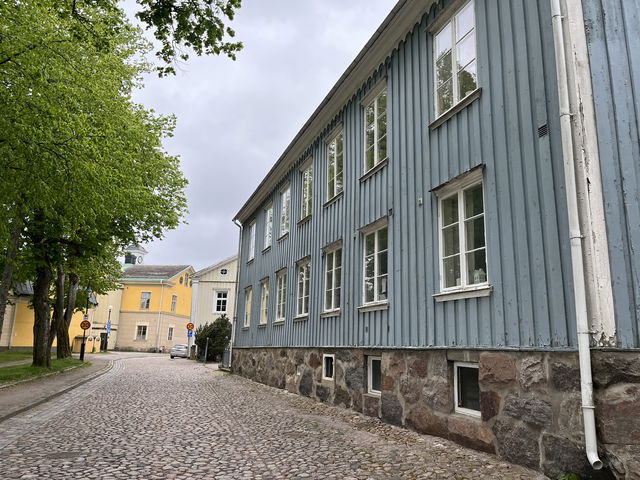

Across the cobbled street lies a park, and beyond it flows the Varnan River. At the water’s edge, you can see the steps once used for rinsing laundry in the river.
Finally, cross the Kungsbron (King’s Bridge) and return to Södra Torget.
You are now back at Södra Torget. We hope you’ve enjoyed a walk filled with historical and architectural impressions.
Toimintaa ja tilat
-
Kävely
-
Kulttuuripolku
Saavutettavuus
-
Lähellä julkista liikennettä
-
Lastenvaunujen kulku
Ota yhteyttä
Osoite
+46 (0)550 88187
Sähköpostiosoite
Kristinehamns turistbyrå
Organisaation logotyyppi

Huomaa, että osa näistä teksteistä on käännetty automaattisesti.
Kysymykset & vastaukset (Q&A)
Esitä kysymys muille Naturkartan-käyttäjille.




